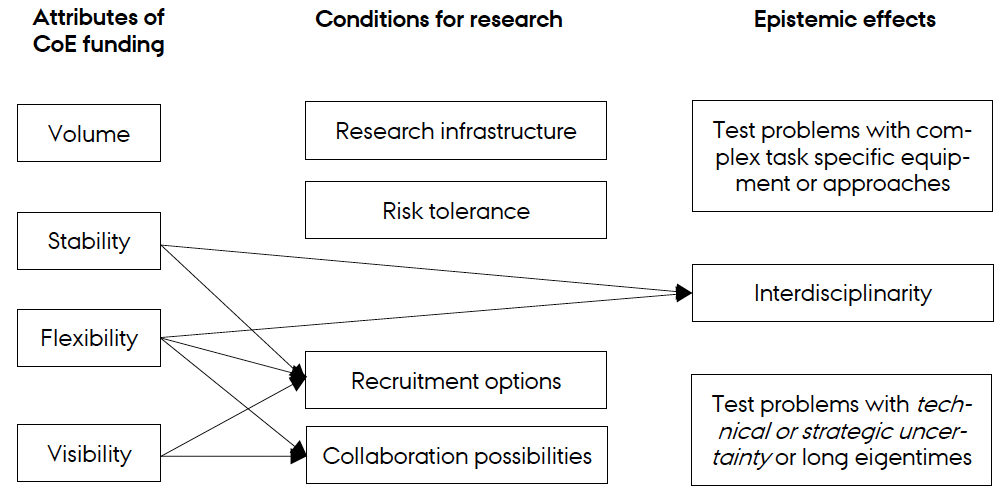CFA analysis of DNFR Centers of Excellence
The Danish Center for Studies in Research and Research Policy (CFA) has conducted a retrospective analysis of the early Centers of Excellences from the National Danish Research Foundation (DNRF)

The DNRF has since 1993 been funding more than a hundred Centers of Excellence (CoEs). The foundation normally only tracks the CoEs during active funding periods and thus lacks knowledge of the long-term impact of the CoEs. Consequently, the DNRF has asked CFA to conduct a retrospective analysis of the DNRF Centers of Excellence from the initial three rounds from 1993-2005.
The purpose of the analysis was to analyze: 1) what elements of the CoE framework were effective in promoting excellence in research and why, 2) the impact of the CoE on the involved researchers, institutions, and society, and 3) potentials and challenges for the DNRF CoE as seen by involved researchers and institutions. The analysis was carried out in the spring and summer of 2023, and the results can be found here.
The analysis finds that the elements of the CoE framework that are effective in promoting excellence in research are stability, volume, visibility, and flexibility. These elements improve recruitment options, collaboration possibilities, increase risk tolerance and allow for acquisition of specialized research infrastructure. This, in turn, increases interdisciplinarity, and allows testing of a greater variety of research questions.
Particularly interdisciplinarity, but also the collective “spirit” of the CoEs, are found by leaders and CoE participants to have been key to success. The collaboration with DNRF is also highly praised. The analysis also finds some challenges or points of attention, particularly revolving around building up an organization and a management structure and around the transition to the CoE-afterlife.
The main impact of the centers has been academic, i.e., by establishing and consolidating research fields or training the next generation of researchers. In relation to this, the bibliometric analysis finds that the majority of the CoEs have a portfolio of publications with an above average citation impact.
The DNRF comments on the report here.
Science Report has published the following article about the CFA analysis.